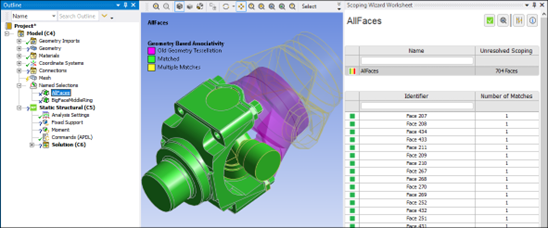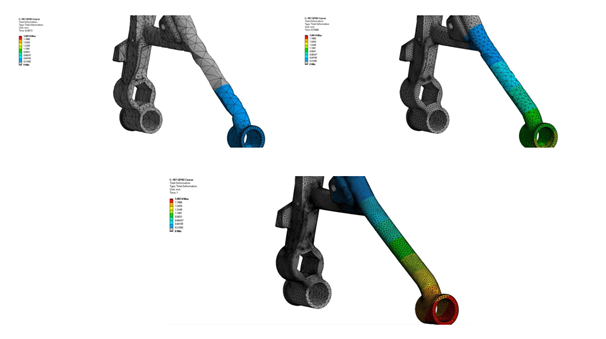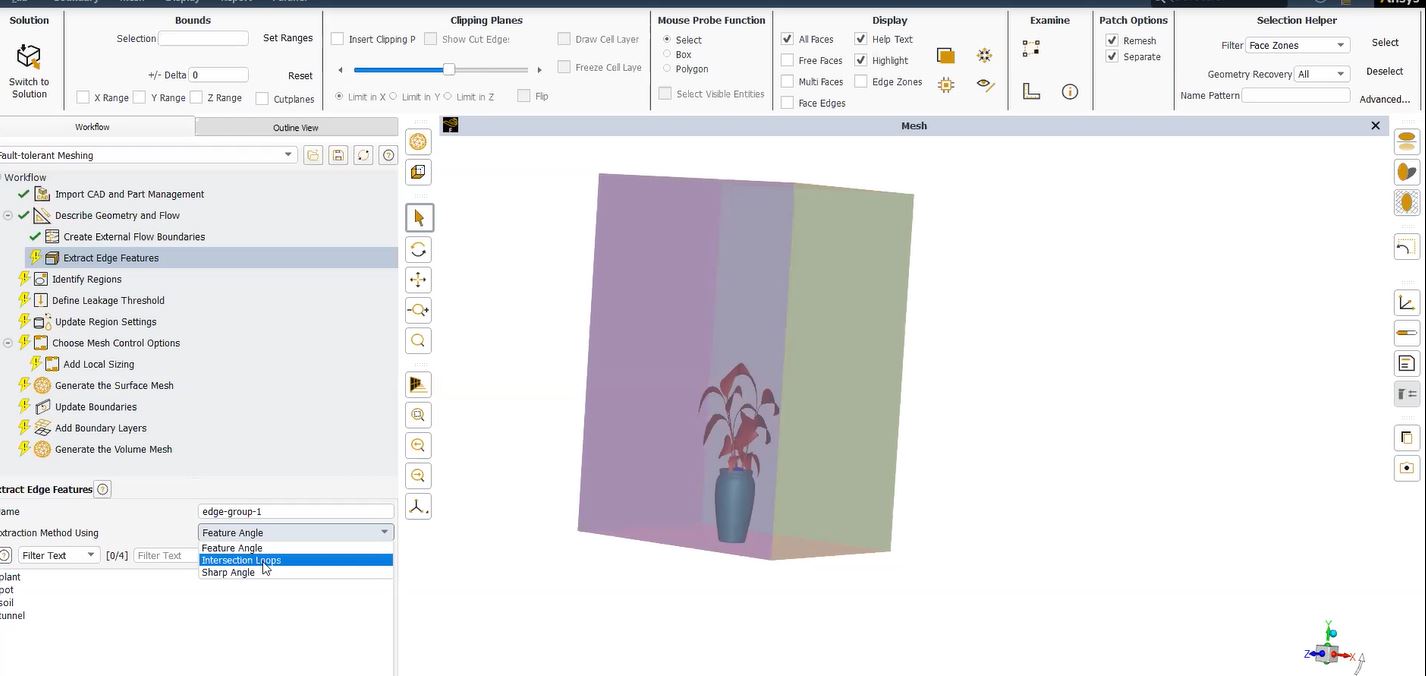Analysis of Models Exhibiting Cyclic Symmetry | Ansys Workbench Mechanical
Mechanical supports cyclic symmetry analysis, and makes it easy to simulate Cyclic Symmetry via a symmetry branch outline at the Model level. More specifically, a user indicates the Low Boundary and the High Boundary for the Cyclic Region of interest. Analyses such as static structural and modal analysis can follow, with both of them performing the analysis as if an entire circular structure is present.
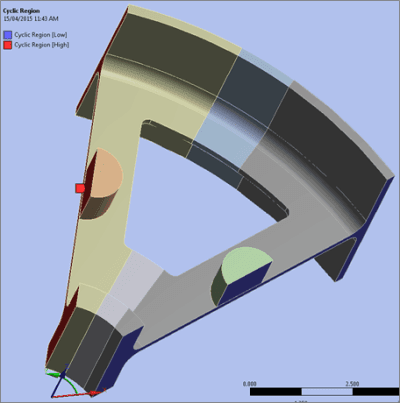
In the simplest cases, the Low Boundary and High Boundary for a Cyclic Region are selected on opposite side faces on one body. They can also be applied to opposite side faces on a multibody part as in the half-cylinders in the figure above. In DesignModeler, parts that do not touch can be declared to form a multibody part, with the result that they will aid in creating Symmetry branches for cyclic symmetry. This article explores some of the details.
Details that Aid Cyclic Symmetry Analysis
Inside Workbench DesignModeler, in the Outline, bodies can be grouped with “Form New Part” into multibody parts. If solid bodies grouped into a multibody part have shared faces between them, the materials become continuous between them, and when meshed in Mechanical, there are nodes on the common interface between them. Bodies that do not touch can also be formed into multibody parts, as seen below:
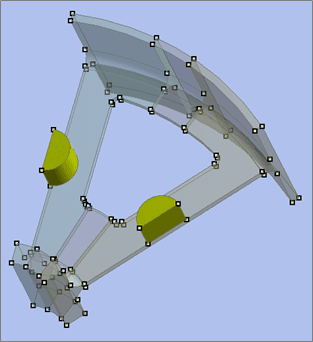

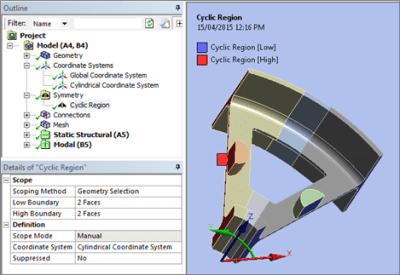
Because of the Cyclic Region, the mesh appearance on the Low Boundary and High Boundary faces will match, so that cyclic symmetry node degree of freedom coupling will work. In the above figure, a Cylindrical Coordinate System was created with its Z axis on the axis of the wheel in this model. Note independent meshing in the parts below.
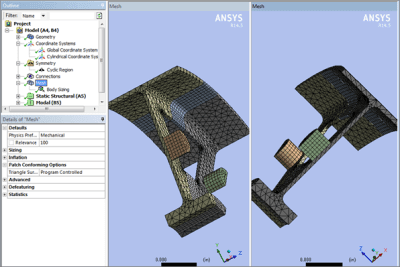
During Cyclic Symmetry in Ansys Mechanical, sufficient boundary conditions should be applied. More specifically, to prevent free motion along the Z axis of the cylindrical coordinate system, and to prevent free rotation movement Y direction (theta) of the cylindrical coordinate system, in a static structural analysis. In a modal analysis, a user should consider what is suitable for constraint.
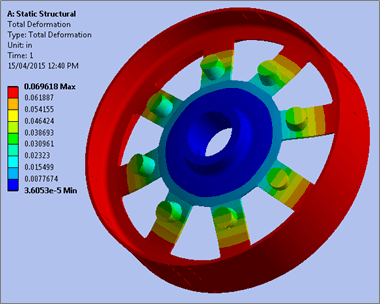
In a modal analysis, both Cyclic Mode and Harmonic Index have to be examined by a user. A sufficient number of modes and harmonic indices should be considered to completely fill a range of frequencies of interest. Workbench Mechanical expands the view of the results to suggest the presence of all sectors.
Animation of results makes it considerably easier to understand the deformations that are calculated.
Conclusions | Cyclic Symmetry in Ansys Mechanical
Workbench Mechanical can apply Symmetry Cyclic Region High and Low Boundaries to a sector made of many bodies, as long as bodies with faces on the low and high boundary sides are declared to be members of a multibody part. This works for bodies that do not share a common boundary. Once enough multibody parts have been created, matching faces on the low and high boundary sides can be selected for Cyclic symmetry Region definition.
The remaining challenge for a user is suitable definition of boundary conditions, and the usual challenges of meshing, contact definition, loading, and other considerations.
Plots of results are automatically expanded to show a complete circle of sector images, permitting reviews that are easier to understand, and that confirm that parts are connecting properly. Recent versions of Ansys Workbench permit control of the number of sectors expanded, and offer some tolerance for imperfect matching of Low and High Boundary face shapes.
Additional Ansys Software Tips & Tricks Resources
- For guidance on Pre-Stressed Modal Analysis Linked to Nonlinear Static Analysis
- For support on Compiling and Loading User Defined Functions (UDFs)
- For Extreme Thermal Expansion Modeling in Mechanical
- For enhancing Autonomous Vehicle Hazard Recognition
- For advanced Analysis of Models Exhibiting Cyclic Symmetry
- Deploying *TREAD in Mechanical APDL to Read External Data
- For Replicating Base Acceleration in Harmonic Analysis
- Setting up Automatic Messages in Ansys Mechanical
- For Constructing Element Quality Plots in Mechanical WB
- For APDL Command Function Post-Response Spectrum Analysis
- Transient Thermal Analysis w/ Non-Physical Temperature Results


